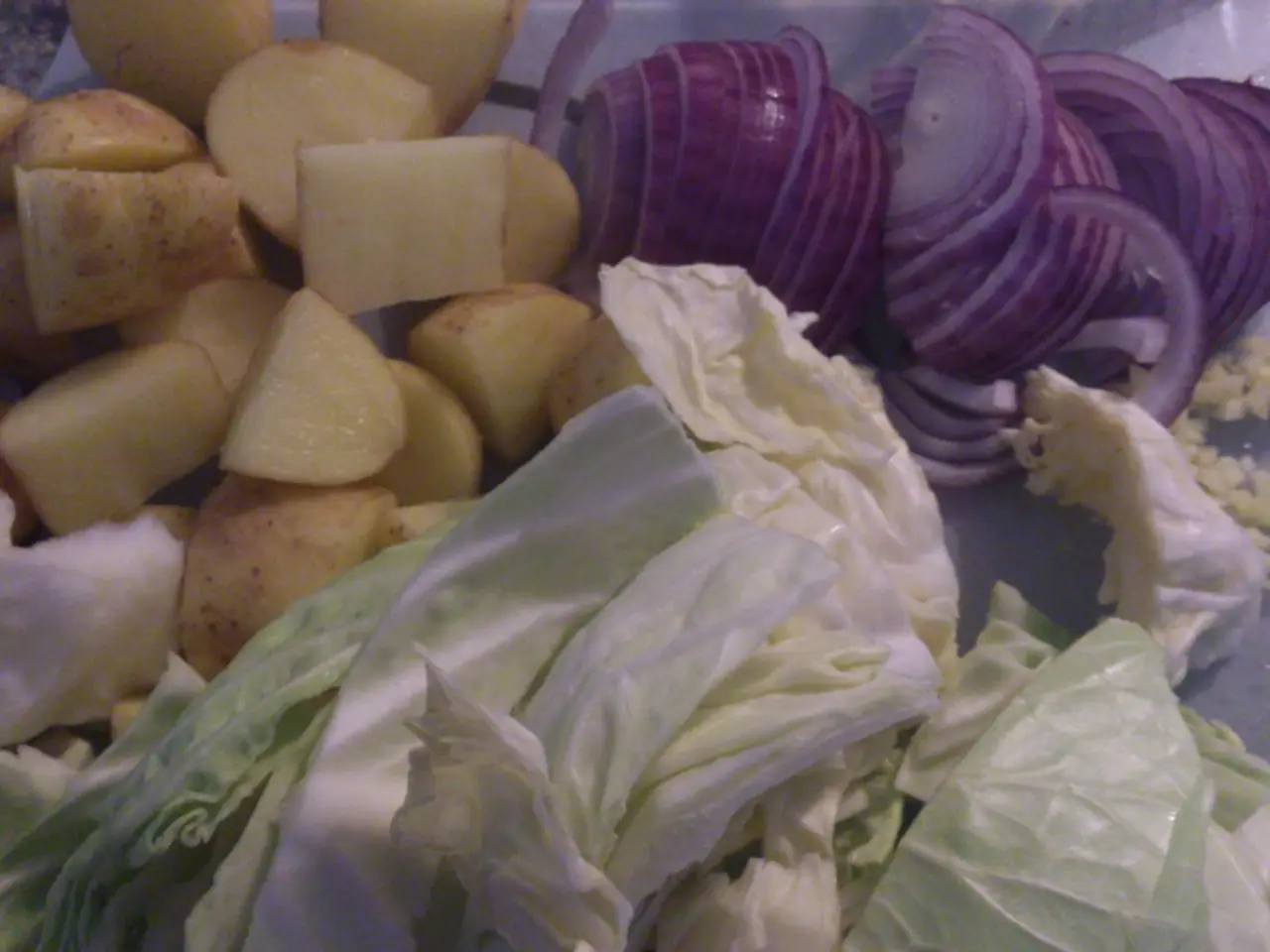Winter Vegetables Top Picks: Top 5 Veggies to Savor During the Cold Season
In the heart of winter, it's possible to enjoy a bounty of fresh vegetables straight from your garden. Here's a guide to growing and harvesting beetroot, leeks, kale, and other winter salad plants for a thriving winter garden.
### Beetroot
Sow beetroot seeds in late spring to early summer (around May to July) to allow a good growing period before the onset of winter. Beetroot can often stay in the ground a while longer into the cooler months for a late harvest. Keep soil well-drained and enriched with compost, thin seedlings to allow room for roots to develop, and keep the bed weed-free. Harvest beetroot roots when they reach a usable size, usually after 10-12 weeks. For winter harvest, leave them in the ground and lift as needed, protecting with mulch or cloches in colder weather.
### Leeks
Sow leeks indoors or in seedbeds in early spring or as seedlings in early summer for overwintering. April is generally a good month to sow leeks outdoors. Leeks prefer fertile, well-drained soil. Water regularly and hill up soil around the stems (earthing up) to keep them white and tender. Leeks can be harvested throughout winter as they are hardy. Pull them up individually once they reach a good size or as needed for fresh use.
### Kale
Plant kale seedlings in late summer (July to September) for a robust crop in autumn and winter. Kale thrives in cool to cold weather and can improve in flavor after frost exposure. Prepare beds with compost-enriched soil, space seedlings adequately, and protect young plants with netting if needed to prevent pest damage. Harvest individual leaves from the base upward during winter or cut whole plants as needed. Kale is frost-hardy and can be left in the ground into early spring.
### Other Winter Salad Plants (like lettuce varieties)
Sow winter-hardy lettuce varieties (e.g., Black-Seeded Simpson, Winter Density, Waldmann’s Dark Green, Winter Marvel, Brune d’Hiver, Arctic King) in late summer or early fall (August to September) for overwintering success. Use cold frames, hoop houses, or other season extenders to protect plants. Ensure soil is fertile and well-drained, and monitor moisture levels carefully. Begin harvesting outer leaves as soon as they are usable. Small plants can survive winter and resume growth as days lengthen.
### General Tips for a Winter Garden
Prepare raised beds by clearing old plant material, adding compost, and improving soil structure before planting new winter crops. Use netting or hoops to protect brassicas like kale and cabbage from pests. Mulch and use cloches or cold frames to protect tender plants from severe frost. Water wisely—plants need less water in winter, but soil shouldn't dry out completely.
By planning your sowing and planting times carefully and choosing hardy varieties, you can enjoy fresh, homegrown salad greens and vegetables all through the colder months. Cooking kale in different ways, such as roasting, can enhance its flavor. Beetroot is easy to grow and can be left in the ground until needed if given a little extra covering of soil or compost. Kale, particularly varieties like 'Cavolo Nero' and 'Red Russian', is appreciated as a winter treat. Leeks can grow impressively large in April until seedheads develop in May, and leeks are a winter staple that can be used in many dishes and bring flavor, especially when sautéed.
- In the winter garden, beetroot can be sown in late spring to early summer and left in the ground for a late harvest, offering a source of fresh vegetables even during colder months.
- To ensure a thriving winter garden, consider planting winter-hardy lettuce varieties like Black-Seeded Simpson or Brune d’Hiver in late summer or early fall, using season extenders if necessary.
- Leeks, a winter staple, can be sown indoors or in outdoor seedbeds in early spring or as seedlings in early summer for overwintering success, with the plants maturing from April to May and being harvested throughout the winter months.
- For those interested in health-and-wellness and healthy-cooking, kale is a perfect choice for a winter garden, due to its ability to improve in flavor after frost exposure and its hardiness that allows it to be left in the ground into early spring.
- Home-and-garden enthusiasts can enhance the lifestyle aspects of their winter garden by engaging in gardening activities such as growing beetroot, leeks, kale, and other winter salad plants, and experimenting with global-cuisines by incorporating fresh, homegrown ingredients in their food-and-drink preparations.





